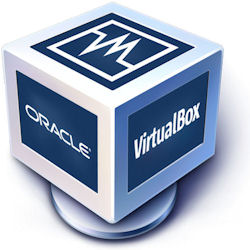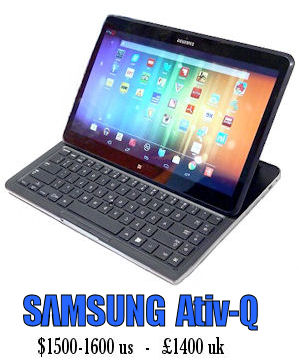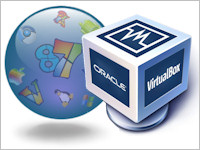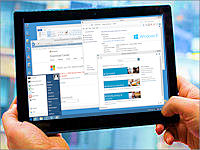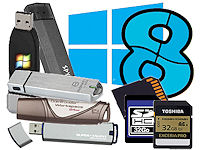April 2nd 2014
March 26th 2014
March 20th 2014
March 10th 2014
Feb 15th 2014


Xubuntu Version 14.04 Released.
Latest distribution is LTS, which will be supported for 3 years.
Lots of small improvements both here in Linux XU and in the parent Ubuntu has made this latest 14.04 release even more outstanding than the last. The icon bar at the bottom of the screen is no longer there by default, which we don’t mind. The taskbar (panel) is still at the top, but is easily moved and has lots of configuration options to let you find something you feel familiar with. When you first arrive just stick on a comfortable wallpaper and spend a little time 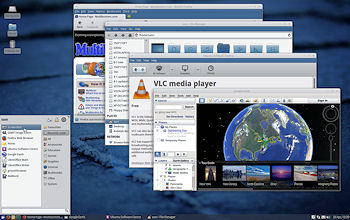 going through the many desktop configuration and appearance options until you feel at home.
going through the many desktop configuration and appearance options until you feel at home.
The desktop environment in L-XU is intuitive and has not sacrificed function over form, unlike the touch-centric Unity offering currently in Ubuntu. You can have all that is great about Ubuntu plus some extra stuff to further prevent you from ever having to go near a command line. The excellent Ubuntu Software Center can be used to install all the favorites and essentials like LibraOffice and the VLC media player, plus thousands of other applications both free and pay for. If the team behind this operating system gave it a sensible and pronounceable name it would become a lot more popular and talked about and we would move it up our recommend Linux list.

Dual-Boot Devices are Quietly Being Dropped.
Microsoft and Google are not ready to be besties.
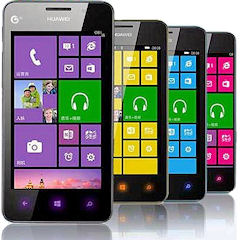 Well it looks like WinDroid dualboot tablets and notebooks are off the menu due to both Microsoft and Google not being happy with the idea. The talk about dualboot phones is still ongoing however and there are some conflicting messages coming through. Huawei have for some reason apparently shelved their plans for a WinDroid device, while Karbonn are pressing ahead and report a possible July release.
Well it looks like WinDroid dualboot tablets and notebooks are off the menu due to both Microsoft and Google not being happy with the idea. The talk about dualboot phones is still ongoing however and there are some conflicting messages coming through. Huawei have for some reason apparently shelved their plans for a WinDroid device, while Karbonn are pressing ahead and report a possible July release.
There may have been a small market for dualboot tablets, but we have our doubts that a dualboot phone would ever be anything more than a curiosity or just another play thing for the technophiles to show off with. Why these super powerful multi-function devices are still called phones is beyond me and I despair that this pinnacle of human achievement, this 8th wonder of the modern world, is used for mostly trivial purposes.
Something useful coming out of the current development of compact devices will hopefully be the advancement of technology and the quicker arrival of miniaturized brain implants to help augment human intelligence.  Personally I just want some more RAM, and I have no interest in being connected to the hive mind, but the baffling popularity of social networking and twexting and twattering and the need that the bewildered herd seem to have to be constantly in touch and 'sharing' the mundane, has revealed to me that most people will probably welcome being assimilated.
Personally I just want some more RAM, and I have no interest in being connected to the hive mind, but the baffling popularity of social networking and twexting and twattering and the need that the bewildered herd seem to have to be constantly in touch and 'sharing' the mundane, has revealed to me that most people will probably welcome being assimilated.
![]() Don’t Shed a Tear for the Demise of Dual-OS Devices
Don’t Shed a Tear for the Demise of Dual-OS Devices
![]() Google and Microsoft Give the Dual-Boot Device Idea the Dual Boot
Google and Microsoft Give the Dual-Boot Device Idea the Dual Boot
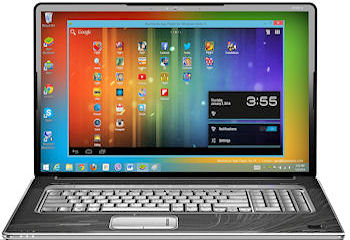 BlueStacks is a piece of software that allows you to run Android apps on a PC or Mac. It has been around for a couple of years now and can be downloaded for free from their website. The difference with the updated version that will be included on some AMD Windows PCs is that it will be capable of running a full virtualized Android OS inside Windows, which along with some hardware optimizations, will say AMD give the user a true 'dual-OS' experience.
BlueStacks is a piece of software that allows you to run Android apps on a PC or Mac. It has been around for a couple of years now and can be downloaded for free from their website. The difference with the updated version that will be included on some AMD Windows PCs is that it will be capable of running a full virtualized Android OS inside Windows, which along with some hardware optimizations, will say AMD give the user a true 'dual-OS' experience.
You can use Windows and Android at the same time and anything you can do on an Android device should be there on your PC. Hardware such as touch screen, camera, and most else will be accessible to Android, as will the Windows files so you can move them into Android and do want you would with them from any Android device.
Intel promoting dual-boot Windows and Android.
Intel and OEMs talking Dual-Boot at CES 2014:
Until Microsoft delivers a decent looking and intuitive touch screen interface and catches up with Android apps, then consumers might indeed be tempted by devices that can give them both Windows and Android. Of course Intel's interest in this is not about consumer choice, but more about sales of devices that have 'Intel Inside'. With the current slump in PC sales and Android dominating the tablet market largely on Intel
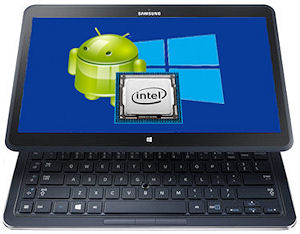 free hardware, any strategy that can help maintain revenue flow has to be worth pursuing.
free hardware, any strategy that can help maintain revenue flow has to be worth pursuing.
There may be a few problems however as it seems Microsoft are against the idea and may put pressure on equipment manufacturers to rethink their current plans for dual OS devices. It seems Google are also not keen on the concept and could limit access to Google Play, which would effectively make the whole exercise a little futile. So are the dual-boot devices being touted at this year's CES really going to make it into the stores? We shall see.
![]() Why Two-in-Ones Are the Future of Laptop Computing
Why Two-in-Ones Are the Future of Laptop Computing
![]() Will Microsoft Allow Dual OS PCs? - They better not.
Will Microsoft Allow Dual OS PCs? - They better not.
![]() Intel and AMD plans for Windows and Android on one PC?
Intel and AMD plans for Windows and Android on one PC?
![]() Intel trumpets Android+Windows as 'more choice'
Intel trumpets Android+Windows as 'more choice'
Android and Ubuntu Dual-Boot
Canonical preview of dual-boot tool for Ubuntu and Android.
This new preview tool is aimed at developers, but the implications have to be that once the dual-boot system and Ubuntu Touch is ready for prime-time the device manufacturers will start to ship a few tablets all configured for us. www.ubuntu.com/tablet
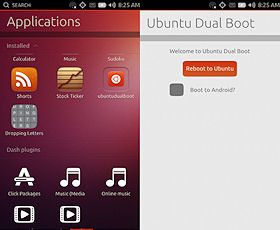


Tablets With Two Operating Systems.
Windows 8.1 and Android 4.4
We've seen plenty of hybrid devices with two operating systems, such as the Asus Trio and the AiO, but now we are about to see a flurry of pure tablets coming our way that have 2 different operating systems pre-installed for us to choose between. Some decent hardware specs along with components that are compatible for both Android and the fully loaded version of Windows 8.1 will make for a device that could be the solution for many people when trying to decide which OS they want on their tablet.
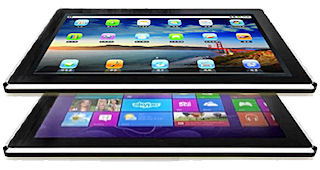
You may be tempted by the extra functionality of a full Windows operating system, but if you have invested a lot of time and money in the Android ecosystem you may just decide to stick with what you know, particularly if there is also a higher cost for the Windows loaded device. It's a scenario with a likely conclusion that is not lost on Microsoft, who clearly still have faith, or hope, in their Windows-8 operating system. The rumor is that Microsoft are wavering normal license fees for the supply and use of Windows, which would certainly explain why a number of equipment manufactures are suddenly considering Dual OS devices. Windows for free? Now there is an idea that's been bouncing around for a while now.
Is this the future of Tablets, or just an aberration born of desperation, or shrewd strategy to elbow in and supplant the opposition? It certainly solves a problem for the consumer and the obvious next step would be a tablet where people could access any ecosystem they had a stake in, be that Android, Windows, Apple, Amazon, Nook, Blackberry..... okay, it was just a fleeting thought. There are no details yet of how this 'Dual Boot' system will work, but the most likely scenario is that Android will run as a Virtual OS inside Windows, allowing both operating systems to be running at the same time so that the user can instantly switch between them. This is far from ideal in terms of overall resource use and Android not being able to make full use of the native hardware. With Android dependent on Windows as a host OS there will be no option to use either operating system if the host becomes unusable. The ideal situation would be to have two fully independently operating systems that can be running at the same time with either being suspended or even shut down when not required. Perhaps not feasible on the limited hardware of a tablet.
![]() Asus tablet to run Android, Windows, or both.
Asus tablet to run Android, Windows, or both.
![]() Ramos i10 Pro Dual Boot Tablet.
Ramos i10 Pro Dual Boot Tablet.
Don't Move Your Windows User Profiles.
http://technet.microsoft.com/en-us/library
The smaller the overall size of a Windows install the quicker our cloning or imaging operations will be and the smaller amount of space we will need to house our backup clones or images. The space saving from moving the profiles folder is minimal but there is a particular reason we don't recommend it when clones and images are being employed. Sharing a common profiles folder across our clones or a restored image of Windows will mean any problems or corruption of our profiles may well follow us and could render all of our backup copies of Windows as buggy or unbootable as the one we just left.

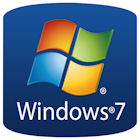
The Windows Service Packs used to give us the option to delete these old files but with no more service packs coming our way a new approach was needed. This update is not a critical or security update so you may not get it automatically depending on your update settings, so check you have it or seek it out if you don't see it in Disk Cleanup.
![]() http://support.microsoft.com/kb/2852386
http://support.microsoft.com/kb/2852386
![]() Reduce the size of the WinSxS Directory and Free up Disk Space.
Reduce the size of the WinSxS Directory and Free up Disk Space.
Gparted is perhaps the most popular graphical partitioning app that can be installed and run from inside most Linux operating systems, but it also comes in this Live version that lets you boot to its graphical and intuitive environment from removable media such as CD or USB /SD flash device. Simply download the ISO file and make your own bootable disk or thumb drive. You can also find it already included on many Live Linux Distro CDs as well as on system repair bootdisks such as PartedMagic, SystemRescueCD and UltimateBootDisk, but it can't hurt to also have it on its own dedicated and faster loading disk.
![]() http://distrowatch.com/?newsid=08071
http://distrowatch.com/?newsid=08071
![]() Download gparted-live-0.16.2-1b-i486.iso (165.7 MB)
Download gparted-live-0.16.2-1b-i486.iso (165.7 MB)
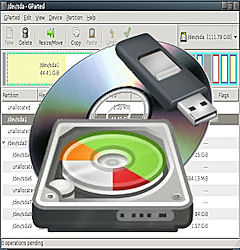
Boot Disk/USB
VirtualBox is a program you install in your operating system that then lets you run another operating system almost like an app. There are versions for Windows, Linux, Macintosh, and Solaris, and each one will let you run any of the others from inside the OS you have installed VirtualBox. The usefulness and flexibility of running virtual operating systems is undeniable. A Virtual OS can be backed up and copied and run in any operating system that can run VirtualBox. You can even turn your main Windows OS into a virtual one that you can then run inside another operating system on a different computer. Bear in mind a virtual Windows or Mac needs licensing just like the real thing, which makes Linux the best option for virtualization while you are learning the ropes.
![]() https://www.virtualbox.org/
https://www.virtualbox.org/
![]() www.unixmen.com/virtualbox-4-2-18-has-been-released/
www.unixmen.com/virtualbox-4-2-18-has-been-released/
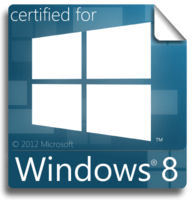 Microsoft has announced some future hardware requirements that will be necessary before device manufactures will be able to say that their equipment has been 'Certified for Windows', thereby having Microsoft's seal of approval that their PC or device is up to spec for the latest version of Windows. There are a few things on the list and you can read a review at ZDNet or you can download the full technical PDF from this MS page.
Microsoft has announced some future hardware requirements that will be necessary before device manufactures will be able to say that their equipment has been 'Certified for Windows', thereby having Microsoft's seal of approval that their PC or device is up to spec for the latest version of Windows. There are a few things on the list and you can read a review at ZDNet or you can download the full technical PDF from this MS page.Trusted Platform Module.
The item of interest for us is the requirement for a TPM chip (Trusted Platform Module) to be included on the motherboard of all Windows certified devices. The TPM is primarily used at the moment to hold keys for encryption software such as Microsoft's own Bitlocker, which allows you to permanently encrypt operating systems and data. Only the Enterprise and Pro versions of Windows have included Bitlocker and so it has mostly only been PC's aimed at business customers that have included a TPM chip. With the chip now mandatory for Windows certification perhaps Bitlocker is going to be included with all future versions of Windows. We think it unlikely that the average PC user is going to need or want to use full drive encryption, so we suspect Microsoft has some other use in mind for the trusted platform module.
TPM and Trusted and Measured Boot.
One obvious use of a TPM chip would be during boot time to adapt or extend the Secure Boot process to give it a more robust chain of trust from one boot component to the next. Each boot item from the firmware itself to the bootmanager, bootloader and os kernel will be signed and have to be verified by keys held in the TPM. Whether these new Trusted and Measured boot systems will pose a more serious problem for Multibooters than the current UEFI Secure Boot we can't yet say, but we would hope that just as at present with TPM chips and Secure Boot there will always be options to turn such features off.

The hype round this machine is of course its Dual OS feature where it can run both Windows and Android and switch between them in a second or two. From Windows laptop to Android tablet in no time at all is a neat trick and may be just the thing if you want the ability to quickly switch between work and play. It must be pretty galling for Microsoft however to see Android provided for tablet mode when Win-8 was predominately designed as a tablet operating system.
We would not call this a dualboot machine in the sense we recognize because Android runs in a virtual environment inside Windows, so if Windows becomes unusable or un-bootable then you have also lost Android. What's more there is always the possibility that the virtual system or Android may cause problems in the Windows installation, which may be an undesirable risk if the machine is relied upon for serious work. For the price of this unit we could get both an Ultrabook and a top end tablet.
![]() http://www.samsung.com/global/ativ/ativq.html
http://www.samsung.com/global/ativ/ativq.html
![]() http://reviews.cnet.com/tablets/samsung-ativ-q
http://reviews.cnet.com/tablets/samsung-ativ-q
We have seen several reviews where this machine has been described as 'Dual Boot' but there is nothing really dual boot about it because it is essentially two separate devices each running a single operating system. The base station is permanently running Windows-8 and the tablet part is always running Android. When the tablet is docked you can choose between seeing Android, or you can let the screen be used as a monitor for the base station so that you can see and use Windows. Switching between the two is by way of a button on the side of the tablet.
When the tablet is undocked it automatically defaults to showing Android, but you can switch back to seeing Windows-8 by way of a WiFi linked remote desktop application running in Android. It may look and feel like the tablet is running Windows and you will have access to all your files and programs, but the tablet is essentially still just a monitor screen, which is now dependent on the speed and reliability of the WiFi connection. Some lag would have to be expected in some situations, and moving out of range of your WiFi will make the tablet Android only. The remote desktop app being used here is also capable of working across the web, so perhaps the dual functionality of the tablet could be utilized from anywhere you can get a decent internet connection, but whether the touch screen would even function or be practical with the inevitable lag, we can't say.

All product and company logos, icons and images that are reproduced on this site are the property and trademarks of their respective owners and are used here merely to illustrate their products, NOT to indicate or infer any endorsement or partnership unless otherwise stated. We have endeavored not to reproduce copyrighted images or graphics or infringe upon the rights of any trademark or copyright holder. If you believe or suspect we may have breached the permissible use of copyrighted material then please bring it to our attention. The reproducing or copying of original material from this site is currently allowed for non commercial purposes with the provision that your source is clearly indicated and that a back-link to the referenced information is included. Thank You. See our full Terms of Use. Material on this site is not guaranteed to be free of errors. Multibooters.com 2012 - 2013







